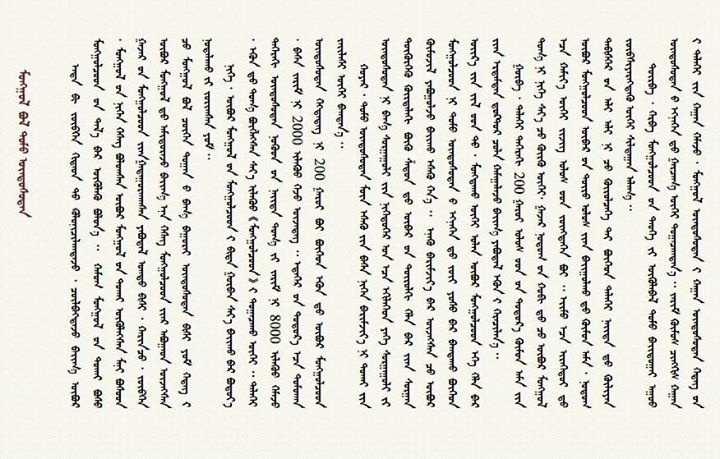| SMHRIC |
| Sep 7, 2015 |
| New York |
The following is an English translation of an article written by Mr.Hada who served 19 years in jail in Southern Mongolia on charges of "splitting the country and engaging in espionage":
The following is a discussion of the land and people of Southern Mongolia, a region historically part of Greater Mongolia but in recent history has been colonized and plundered by the Chinese. For the sake of this discussion, I have recognized Southern Mongolia as separate from the Mongolian nation as a whole in order to emphasize its size and strength and by no means to discriminate fellow Mongolians living elsewhere.
The total population of the Mongolians excluding those nominally regarded as “Mongolians” in Southern Mongolia is three million. Depending on the criteria being used, the number of nations or peoples around the world is considered to be between 2000 to 8000. Those counted as “larger” includes more than 200 nations; Southern Mongolia is inarguably one of them.
Another criterion required to meet in order to define a nation is “large” is if the nation has formed an educational system spanning from elementary school to college in its native language. An increasing number of Southern Mongolians earning PhDs in Mongolian fulfills this criterion.
Among the world’s nearly 200 countries, there are a great number of them that have populations less than one million and occupy territories much smaller than Southern Mongolia. Southern Mongolia has the firm population and territorial foundation to create its own nation state. People around the world have no reason to disqualify this claim.
Mongolia is not only a large nation but a royal nation. Chinggis Khan, the founder of the Mongol empire, spread Mongol rule from the Pacific to Atlantic Ocean and is considered to be the emperor of mankind.
The total global population of Mongolians tops ten million, not including those who have been partially assimilated and have yet to restore their national identities. If you also include the population of Tatar origin, the population of indigenous Mongolians would top 100 million. How many other nations have population more than 100 million on our planet?
Therefore, the Southern Mongolians are by no means an “ethnic minority”. It is an undeniable fact that they are the indigenous people of a great nation. In order to serve their hidden political agenda, the Chinese discriminated against us and downgraded us to an “ethnic minority.” It serves a political agenda of the Chinese to belittle the Mongolian nation, diminish national self-confidence and cause them to abandon any aspirations of self-determination. The Chinese government skillfully hides the true nature of colonization in occupied nations by employing the term “ethnic minority” over more legitimate terms such as “indigenous people” or “indigenous nation.” Furthermore, this alleged “minority” status is used in contrast to the 1.5 billion Han majority. Why must we be compared to them? Why isn’t our nation being compared with the Vatican whose population is less than one thousand?
Are we really destined to the status of “ethnic minority” imposed on us by the Chinese? Are we truly devoid of the capability of building and running our own nation state? Why don’t we make our mind to fight for our future? We have no reason to sit back.
In summary, we are not a weak and small “ethnic minority”. We are the great and indigenous nation of the Mongolian Plateau. The Chinese colonial regime will inevitably collapse and in the near future we will be free. My fellow Mongolians, never give up, never lose confidence!
June 17, 2015






 Beyond
Great Walls: Environment, Identity, and Development on the Chinese
Grasslands of Inner Mongolia
Beyond
Great Walls: Environment, Identity, and Development on the Chinese
Grasslands of Inner Mongolia China's
Pastoral Region: Sheep and Wool, Minority Nationalities, Rangeland
Degradation and Sustainable Development
China's
Pastoral Region: Sheep and Wool, Minority Nationalities, Rangeland
Degradation and Sustainable Development The
Ordos Plateau of China: An Endangered Environment (Unu Studies on
Critical Environmental Regions)
The
Ordos Plateau of China: An Endangered Environment (Unu Studies on
Critical Environmental Regions)